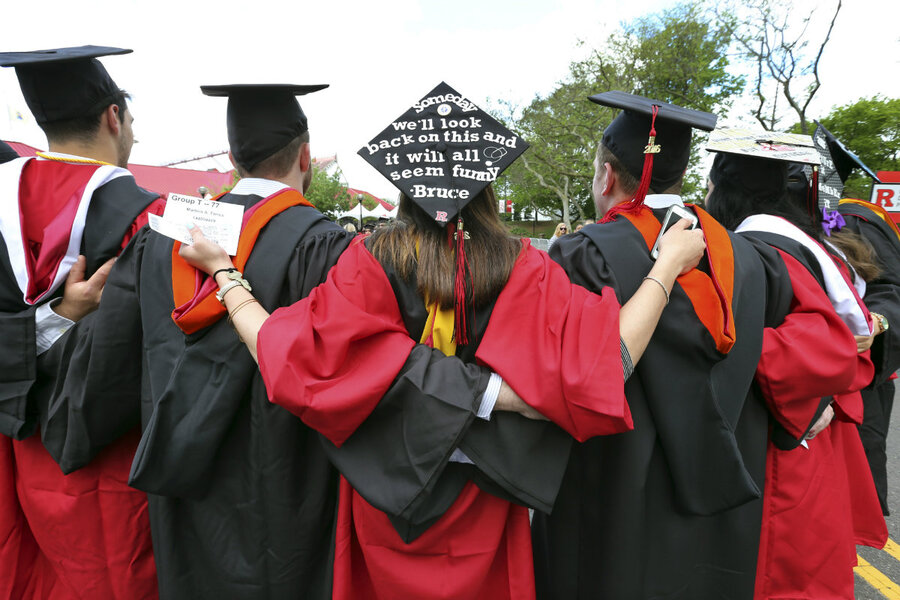US student debt tops $1.31 trillion: Does Betsy DeVos have a plan?
Loading...
Student loans were the leading cause for a substantial increase in household debt last year, the Federal Reserve Bank of New York said Thursday.
While the high balance of US student debt is not news anymore, the new record-high $1.31 trillion balance, up 2.4 percent in the fourth quarter, is another reminder of the severity of a problem that has cast a shadow over the nation in recent years.
During her confirmation hearing, now-Secretary of Education Betsy DeVos suggested a vision for higher education that might not require as much student debt.
“We need to embrace new pathways of learning,” said Ms. DeVos, who has championed trade schools and for-profit online universities. “For too long, a college degree has been pushed as the only avenue for a better life. The old and expensive brick-mortar-and-ivy model is not the only one that will lead to a prosperous future.”
Loans taken out by undergraduate and graduate students are a key driver of household debt, explained Wilbert van der Klaauw, senior vice president at the New York Fed, in a statement. "Debt held by Americans is approaching its previous peak, yet its composition today is vastly different as the growth in balances has been driven by non-housing debt," he said.
"Since reaching a trough in mid-2013, the rebound in household debt has been led by student debt and auto debt, with only sluggish growth in mortgage debt," he said.
Contributing $31 billion of the $226 billion increase in total household debt, student debt balances have rise every year for the past 18 years, the report shows. While the total household loan balances have dropped 1 percent since year-end 2008, student loan and auto debt are the only two categories of consumer debt tracked by the New York Fed that have steadily increased during the same period.
But the $1.31 trillion figure is lower than the one reported by the Federal Reserve Board in Washington, which pegs total student debt $100 million higher, at $1.41 trillion.
Regulators blame the discrepancy on the New York Fed’s sampling of household credit reports, which are often filled with errors.
The news of the record-high student loan balance comes two weeks after DeVos was confirmed as the new secretary of Education, the department that is the largest provider of student loans. While she said she recognized the severity of the issue, as someone who has no personal experience with college financial aid – neither she nor her children had ever borrowed money for school – her nomination had come under much scrutiny.
“The issue of student debt and the amount of student debt – over $1.3 trillion right now up, almost 1000 percent in the last eight years – that’s a very serious issue,” DeVos said at her confirmation hearing, mistakenly referencing the growth of college costs over 30 years.
With her support for the for-profit industry and upholding vocational education as “a noble pursuit,” DeVos also signaled an unwillingness to commit to enforce the “gainful employment” rule championed by the Obama administration. This controversial standard, which seeks to punish schools that leave students with high levels of debt but weak job prospects, was seen as targeting for-profit colleges.
During her hearing, she was asked about tuition-free colleges, which formed a major part of Sen. Bernie Sanders’s campaign platform.
“Senator, I think that is a really interesting idea and it’s really great to consider and think about,” she said. “But we also have to consider the fact that there is nothing in life that’s truly free. Somebody has got to pay for it.”
Despite her often noncommittal answers to questions on student loan delinquencies, default, and interest rates, DeVos expressed her commitment to learning more about both sides of the issues and working with the senators.
“We can work together and we can work hard on making sure college – or higher education in some form – is affordable for all young people that want to pursue it,” she said.








